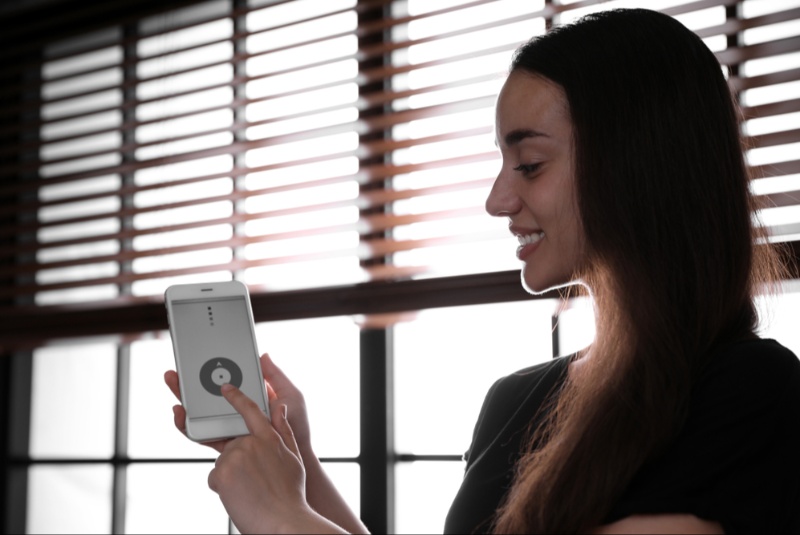Smart blinds and window treatments are innovative solutions that allow you to control your window coverings remotely through a smartphone, tablet, or voice commands. These modern window treatments can be integrated into your smart home system, giving you the ability to open, close, and adjust your blinds with ease. Whether you're looking for increased convenience, enhanced privacy, or energy efficiency, smart blinds offer a customizable way to manage natural light and interior temperature. This guide will explore the various types, benefits, and features of smart blinds and window treatments, helping you make an informed decision for your home.
Benefits of Smart Blinds
Smart blinds come with numerous benefits that go beyond the convenience of remote control. One of the most significant advantages is energy efficiency. Smart blinds can be programmed to open or close at specific times of day, allowing you to control sunlight exposure, which can help reduce heating and cooling costs. Additionally, smart blinds can be integrated with sensors that detect temperature, light levels, or even your presence, automatically adjusting based on your preferences. Another benefit is enhanced home security, as smart blinds can give the appearance that someone is home by opening and closing at set intervals, even when you're away.
Types of Smart Blinds and Window Treatments
There are several types of smart blinds and window treatments to choose from, each offering unique features and styles. Motorized blinds, for instance, are operated through motors that allow you to control them with a remote or app. There are also smart shades, which come in various styles like roller shades, cellular shades, or Roman shades. These shades offer different levels of light filtering, from blackout to light diffusion. Some smart window treatments are compatible with voice assistants like Alexa or Google Assistant, while others integrate with home automation systems like Apple HomeKit or SmartThings. The variety of options ensures that you can find the perfect style for any room.
How to Choose the Right Smart Blinds for Your Home
When choosing smart blinds for your home, there are a few key factors to consider. First, think about the type of window treatment that suits your aesthetic and functional needs, whether that’s blinds, shades, or curtains. Next, consider the level of light control you need—blackout blinds are ideal for bedrooms, while light-filtering options may be better for living spaces. It’s also important to check the compatibility of the smart blinds with your existing smart home system or devices, ensuring smooth integration. Lastly, think about your budget and the installation process, as some systems may require professional setup.
Smart Blinds Integration with Smart Home Systems
One of the best features of smart blinds is their ability to integrate seamlessly with your existing smart home ecosystem. Most smart blinds are compatible with popular voice assistants like Amazon Alexa, Google Assistant, or Apple Siri, allowing you to control your blinds with simple voice commands. Additionally, many smart blinds can be connected to home automation systems like SmartThings or Apple HomeKit, enabling you to create custom routines and schedules. For example, you can program your blinds to open at sunrise or close at sunset, or have them adjust automatically based on room temperature. This integration makes managing your home environment easier and more efficient.
Energy Efficiency and Cost Savings
Smart blinds offer significant energy-saving benefits by controlling the amount of sunlight that enters your home. During the summer, smart blinds can be programmed to close during the hottest part of the day, keeping your home cooler and reducing the need for air conditioning. In the winter, they can open during the day to let in sunlight and help heat your home naturally, lowering your heating bills. By reducing the demand on your HVAC system, smart blinds can lead to substantial energy savings over time. Additionally, some smart blinds qualify for energy efficiency tax credits, further enhancing your cost savings.

Privacy and Security Features
Smart blinds enhance privacy and security by allowing you to control your window coverings remotely. With just a tap on your smartphone, you can close your blinds when you're away from home, preventing outsiders from peering in. You can also program them to close automatically at night or open in the morning for privacy while still letting in natural light. Some smart blinds even allow for remote monitoring, so you can check the status of your blinds while you're traveling. By automating your blinds, you give the appearance of someone being home, deterring potential intruders and enhancing overall home security.
Customization and Scheduling Options
One of the most appealing aspects of smart blinds is the ability to customize and schedule them to fit your daily routine. Many smart blinds come with apps that let you create schedules for when you want the blinds to open or close. For instance, you can program them to open gradually in the morning to help you wake up with natural light or to close automatically in the evening to block out streetlights. Some smart blinds even allow for group control, so you can adjust all the blinds in a room or throughout the house simultaneously. These customization options help create a more comfortable and efficient home environment.
Voice Control and Hands-Free Convenience
With the rise of smart home technology, voice control has become a popular feature for managing devices, including smart blinds. Voice assistants like Alexa, Google Assistant, and Siri allow you to operate your blinds without lifting a finger. Simply say, “Alexa, close the living room blinds,” or “Hey Siri, open the bedroom shades,” and your blinds will respond immediately. This hands-free convenience is particularly useful when your hands are full or when you want to control your blinds from another room. Voice control also makes smart blinds more accessible for people with mobility issues, adding an extra layer of convenience and comfort.
Solar-Powered Smart Blinds
For eco-conscious homeowners, solar-powered smart blinds are a sustainable and energy-efficient option. These blinds use small solar panels to harness sunlight and power the motor, reducing the need for electrical power or battery replacements. Solar-powered smart blinds are especially useful for windows that receive a lot of direct sunlight, as they can generate enough power to operate throughout the day. Not only do they help reduce your carbon footprint, but they also eliminate the need for wiring, making installation easier. Solar-powered blinds are an excellent option for anyone looking to make their home smarter and more sustainable.
Installation Considerations
When installing smart blinds, it's important to consider whether you’ll opt for professional installation or a DIY approach. Some smart blinds are designed for easy, plug-and-play installation, requiring minimal tools and effort. Others, particularly hardwired models or those that need to be integrated with a home automation system, may require professional installation. Be sure to check the installation requirements before purchasing, especially if you're not comfortable with wiring or mounting hardware. Additionally, ensure that your smart blinds have a reliable Wi-Fi connection or use a compatible smart hub to ensure smooth operation.
Smart blinds and window treatments offer a modern solution for homeowners seeking convenience, energy efficiency, and enhanced privacy. With a variety of styles, materials, and features to choose from, there’s a smart blind option to fit every home and lifestyle. Whether you want to control your blinds remotely, set up custom schedules, or integrate them into your existing smart home system, the possibilities are endless. By investing in the right smart blinds, you can create a more comfortable, efficient, and secure living environment. Start exploring your options today and transform your home with the latest in smart window treatments.





